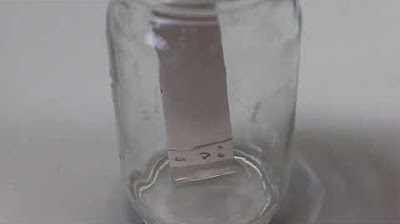Skills Lab - Pemasangan NGT
Summary
TLDRIn this instructional video, Dr. Nova from the Anesthesia Department at FKI UMY demonstrates the correct technique for inserting a nasogastric tube (NGT). The process involves preparing the necessary tools, assessing the patient's nostrils, and carefully inserting the tube while ensuring the patient's comfort. Dr. Nova explains key steps such as positioning the patient, checking nostril patency, and using a feeding spat. The video emphasizes patient cooperation, safety precautions, and effective fixation of the tube for accurate placement. The goal is to ensure proper practice in nasogastric tube installation for both nutrition delivery and fluid removal.
Takeaways
- 😀 Dr. Nova introduces the topic of nasogastric tube (NGT) installation technique, aiming to help viewers understand and practice it correctly.
- 😀 The script details the necessary tools for NGT installation, including different sizes of nasogastric tubes for adults, children, and babies.
- 😀 Preparation involves the use of water-soluble jelly, anatomical tweezers, tongue forceps, gloves, and other essential tools like a flashlight, tissue plaster, and a stethoscope.
- 😀 The healthcare provider must obtain both verbal and written consent from the patient, while also explaining the procedure's indications and possible complications.
- 😀 Patient positioning is crucial, with the patient needing to be in a Fowler's or semi-Fowler's position with the bed raised to 45 degrees or supported with pillows.
- 😀 The nostrils should be assessed to ensure there are no blockages or deviations before inserting the NGT. This is done by checking the nostrils' patency with a flashlight.
- 😀 After ensuring patient comfort and readiness, handwashing and wearing gloves are essential to maintain hygiene during the procedure.
- 😀 The NGT tube should be lubricated and inserted into the most patent nostril, directed towards the sternal notch, and advanced slowly while the patient may be asked to drink water for better insertion.
- 😀 Resistance during insertion should be handled by slightly adjusting the angle or pulling back and rotating the tube before reattempting insertion.
- 😀 The correct placement of the NGT tube is confirmed by checking for air bubbles using a feeding syringe and ensuring the tube is securely fixed using tape or other fixation methods.
- 😀 If the tube is used for feeding, a feeding syringe is employed, and if it's for removing stomach fluids, a suction bag is used. Alternative tools like anatomical tweezers or forceps can aid in insertion if difficulties arise.
Q & A
What is the main purpose of the video?
-The main purpose of the video is to teach the proper technique for inserting a nasogastric (NGT) tube, including the tools, patient preparation, and safety precautions involved in the procedure.
What are the different NGT tube sizes recommended for different age groups?
-For adults, the recommended NGT tube size is 16 FR. For children, a size of 14 to 16 FR is used, and for babies, a size of 8 FR is typically used.
What should the NGT tube be lubricated with?
-The tip of the NGT tube should be lubricated with a water-soluble gel to facilitate smooth insertion.
How should the patient be positioned for NGT insertion?
-The patient should be positioned in a Fowler’s or semi-Fowler’s position, with the bed raised to about 45 degrees or two pillows placed behind the patient's back.
What is the purpose of the anatomical tweezers and tongue forceps?
-The anatomical tweezers and tongue forceps are used to assist in inserting the NGT tube, particularly if the patient is not cooperative or when the procedure is challenging.
What should be done if resistance is felt during the NGT tube insertion?
-If resistance is felt during the insertion, the patient should be asked to lower their head or drink water through a straw to help the tube enter the digestive tract. If resistance persists, pull the tube back 1 to 2 cm, rotate it, and then push it in again.
What steps are involved in checking the NGT tube's position after insertion?
-After inserting the NGT tube, the position is checked by filling a feeding spad with air and placing it at the end of the tube outside the patient's body. You should then press the air-filled spad and listen for a 'bluk blup' sound in the left hypogastric region.
How should the NGT tube be secured after it has been inserted?
-The NGT tube can be secured using two methods: 1) By placing it on the patient’s chest and securing it with a towel or plaster tape, or 2) Using plaster tape cut in half and wrapping it around the tube for fixation.
What are some potential complications to watch for when inserting an NGT tube?
-Potential complications include respiratory distress, inability to speak, bleeding from the nostril, excessive resistance during insertion, or the NGT tube being rolled up in the mouth.
What types of tools are needed for NGT tube insertion?
-The tools needed for NGT tube insertion include the NGT tube, B-bag, water-soluble jelly, anatomical tweezers, tongue forceps, gloves, feeding device (spad), stethoscope, water glass with a straw, and tissue plaster for fixation.
Outlines

Dieser Bereich ist nur für Premium-Benutzer verfügbar. Bitte führen Sie ein Upgrade durch, um auf diesen Abschnitt zuzugreifen.
Upgrade durchführenMindmap

Dieser Bereich ist nur für Premium-Benutzer verfügbar. Bitte führen Sie ein Upgrade durch, um auf diesen Abschnitt zuzugreifen.
Upgrade durchführenKeywords

Dieser Bereich ist nur für Premium-Benutzer verfügbar. Bitte führen Sie ein Upgrade durch, um auf diesen Abschnitt zuzugreifen.
Upgrade durchführenHighlights

Dieser Bereich ist nur für Premium-Benutzer verfügbar. Bitte führen Sie ein Upgrade durch, um auf diesen Abschnitt zuzugreifen.
Upgrade durchführenTranscripts

Dieser Bereich ist nur für Premium-Benutzer verfügbar. Bitte führen Sie ein Upgrade durch, um auf diesen Abschnitt zuzugreifen.
Upgrade durchführenWeitere ähnliche Videos ansehen
5.0 / 5 (0 votes)






